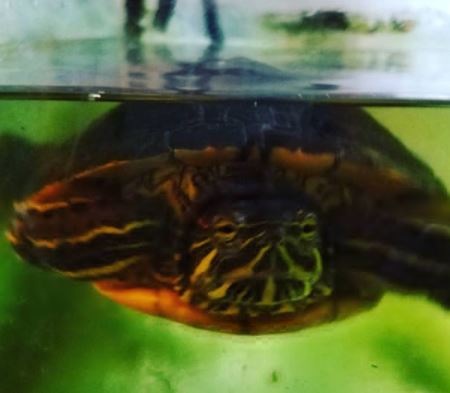Is turtle tank water good for plants?
Turtles are popular pets, and many of them live in turtle tanks with aquatic plants. The question, “Is turtle tank water good for the plants?” is asked often by new pet owners.
This blog post will explore what type of water turtles need, how to care for aquatic plants, and whether or not it’s wise to have both at the same time.
Related Posts:
- Top 5 Turtle Substrate for Your Pet Tank
- Can Turtles Live in a Fish Tank Filled With Water?
- Can I Use a Fish Water Conditioner for Turtles?
- Can You Put Fake Plants in a Turtle Tank?
- Can I Keep My Turtle Tank Outside?
Is Turtle Tank Water Good for Plants?
Is turtle tank water good for the plants?
This answer is yes. Turtle tanks have water that helps plants grow. It has calcium and magnesium, which are nutritious for plants and help them live.
Turtle water also has nitrogen and phosphate, which make turtle tank water good for plants.
Nitrogen helps the leaves and plant fibers grow and become healthy.
Phosphate is a nutrient that helps make new cells within the plant grow.
These nutrients are what make turtle tank water good for plants.
The water also contains vitamin B1, which is used by some plants as an enzyme to create amino acids (and proteins).
If you want to use your turtle tank as a regular garden pond, then these nutrients will help with that, too!
When adding turtles to your aquarium, it’s important to know whether they’re aquatic or semi-aquatic.
Aquatic turtles spend their time in the water. They’re the ones you’ll most commonly see swimming around. Semi-aquatic turtles spend part of their time on land, but can also swim. They typically don’t travel too far from water.
Here are the basic steps to set up a turtle tank:
- Place your filter in the back corner of your tank.
- Fill half the tank with water.
- Add vegetated planted gravel or sand into your aquarium.
- Make sure that there is no more than one inch of space between the top surface of the gravel and the water level (to best prevent algae growth)
- Keep it outside! Turtles need lots of sunlight. If you live somewhere where it’s warm year-round, you can set up a turtle tank in your backyard.
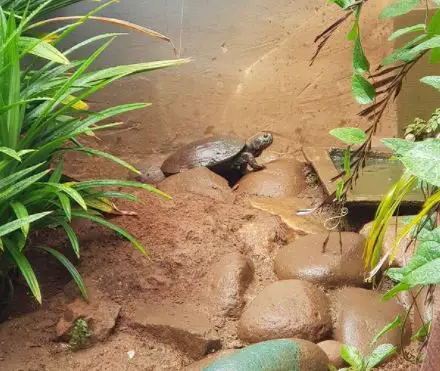
Can You Irrigate Plants With Aquarium Water?
Yes, aquarium water can be used as a regular source of irrigation for most plants. However, there are some drawbacks that need to be addressed if you intend to use this method.
The first drawback is that most fish tank water contains an abundance of nitrates (NO3), which, over time, may cause problems like root burn on most plants grown in containers.
Because plant roots absorb nitrates directly through their cell membranes without assistance from the mycorrhizal fungi normally found in healthy soils, they tend to accumulate more rapidly than they can be removed by the plant, leading to toxicity.
Nitrate accumulation is especially dangerous in container-grown plants because, since the nutrient medium used in containers holds less water than soil, irrigation frequency will be greater and more nitrates will accumulate.
This problem can be exacerbated when using anaerobic (without oxygen) media like peat or rock wool that has gone through the post-harvest “pillow” process.
Nitrates are produced during this manufacturing process, which forces growers to use sand, perlite, or vermiculite in their mixes to aerate the media to prevent major problems with root rot.
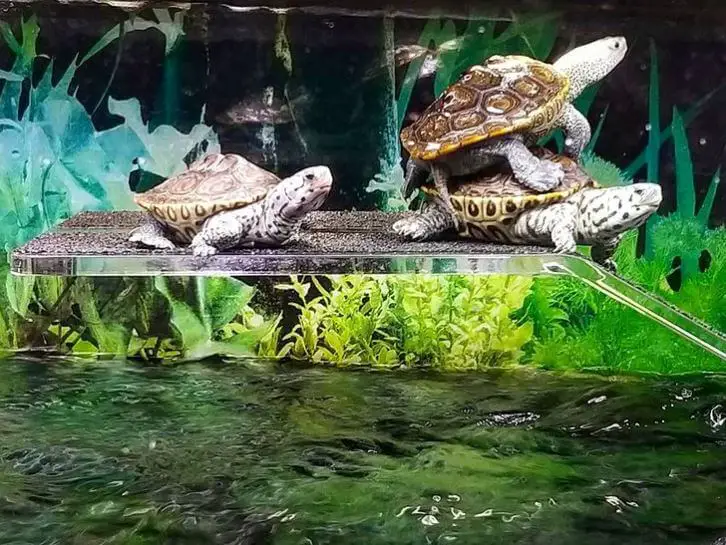
But even if you are irrigating your containers every day with tap water, at some time, you may notice signs of root burn on your best specimens.
The second drawback is the possibility of introducing chlorine and fluoride to your plants if you use routinely tap water (if it has been treated with these chemicals).
If you plan on irrigating with aquarium water, remember that the heat and aeration in a tank will cause these chemicals to be evaporated into the air, leaving only harmless constituents like sodium.
What Can You Use Instead of Aquarium Water?
The best thing is to simply add 1/8 teaspoon (0.7g) of Epsom salts (magnesium sulfate) into each gallon of irrigation water used for container-grown plants.
This makes the solution slightly acidic but still within plant-tolerable ranges while supplying magnesium, which most soils lack due to the overuse of chemical fertilizers and care products.
If you are using water, let it sit overnight to evaporate chlorine before adding the Epsom salts.
Just remember that rinsing your container mix with tap water is not recommended because you will only be allowing more of the chemical constituents present in your municipal water supply into your potting mix.
Remember also that aquarium water does not contain any plant nutrients other than carbon dioxide, which occurs naturally at a 21% concentration in the air.
To provide needed growth-critical elements for healthy plants, always fertilize regularly during irrigations with a balanced fertilizer solution or use liquid seaweed extract 2 to 3 times per week to provide all necessary secondary and trace minerals.
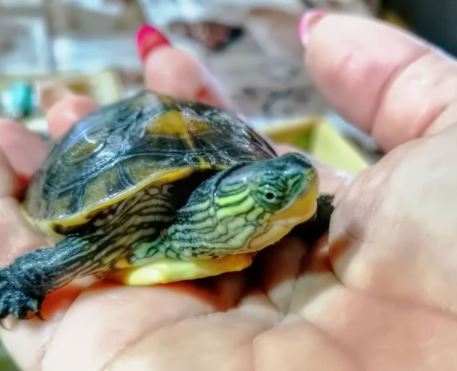
How Does Turtle Waste Help Plants Grow?
Plants need phosphorus, among other nutrients, to grow.
But in many places, there is not enough available phosphorus in the soil for large-scale agriculture. The quest to find an alternative source of phosphorus has led some researchers to turtle waste on farms in China and Thailand.
Farmer Li Yongqi (李永起) turned his attention away from farming rice when he noticed that many turtles were caught in the wild by local fishermen near his farm on the outskirts of Beijing.
Instead of eating them or selling them to others who would do so, he began feeding them leftover food scraps and kitchen waste upon their arrival at his farm.
Turtle farm near Beijing where Li Yongqi feeds turtle food scraps to increase phosphorus levels in nearby rice fields.
It turns out that the turtles were very good for his soil, increasing the level of phosphorus by at least 10 percent in nearby fields of wheat and corn.
Farmers like Li are facing an increasingly dire situation as they try to grow food for China’s 1.3 billion people without chemicals or fertilizer made from phosphate rock, which is mined mostly in Morocco and Western Sahara.
Food production must increase by 60 percent over the next four decades just to keep up with China’s growing population, according to research published in 2012 by David Hodson and Feng Wang of Australia’s Commonwealth Scientific and Industrial Research Organization.
They estimate that existing farms could produce increased yields if they increased their use of chemical and organic fertilizers, but this would cost farmers 12 billion yuan (US$1.9 billion) a year and it might not be sustainable in the long term without higher prices for natural gas used to make such fertilizer.
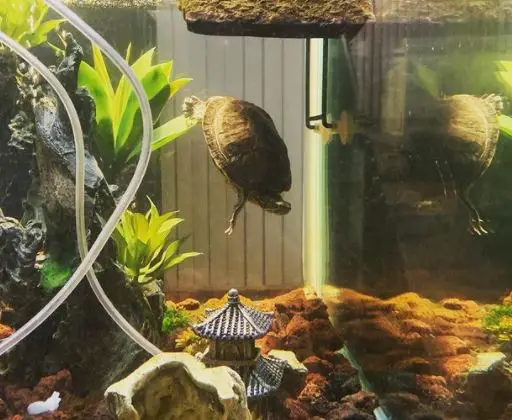
Can You Water Plants With Fish Tank Water?
An article by Garden Groces explains why you should never use fish tank water on your plants: “Fish can carry salmonella and other bacteria, which can be harmful to humans. These bacteria also affect your plants.”
The symptoms displayed by infected people include diarrhea, nausea, vomiting, and stomach pain. Most symptoms appear within 12 to 72 hours after exposure and last 2 or 3 days (occasionally up to 1 week).
The Environmental Protection Agency (EPA) does not investigate fish tank water.
It is the owner’s responsibility to maintain their own fish tank in a manner that meets state and local laws, rules, or regulations. The EPA recommends that you “never dispose of aquarium water directly into sewers or drains, storm sewers, streets, parking lots, or waterways.”
They also recommend immediately draining and rinsing your filter media before disposing of it.
Doing so will reduce the possibility of transferring diseases from one water source to another, including your plants!
Many biologists agree with this advice. According to The University of Nebraska-Lincoln College of Biological Sciences Department of Agronomy Guide Sheet #50H “Aquatic Plant Fertilizers,” fish emulsion, fish meal, and other animal byproducts that are added to soil are not recommended for use on plants grown in hydroponics.
Fish tank water, particularly, should be avoided since chemicals used to treat the water may cause damage to your plants.
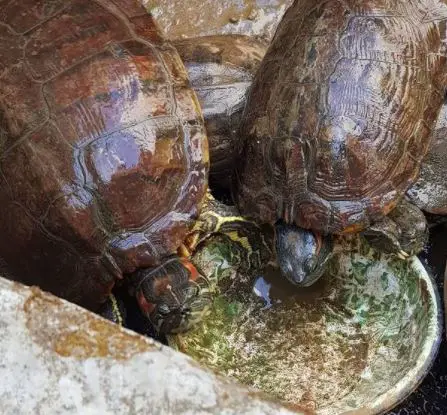
Do Turtles Make Good Fertilizers?
Turtle shells are used in China and parts of India to fertilize crops like rice, corn, and wheat.
Farmers would place the shells directly in their fields or mix them with soil before seeding.
However, many people wonder if turtle fertilizer is safe for use on your lawn or garden.
What exactly attracts turtles to eat plants? Is it harmful to humans?
How do they digest the food after eating it? Can you even get turtles to eat your plants?
Further research is needed.
Before we examine these very important points, let’s explore some fun facts about turtles in general:
- The average life expectancy of a box turtle is around 80 years.
- Turtles don’t just walk slowly. They actually move pretty slowly.
- Some types of turtles can move about 20 feet in an hour, while that same distance could be covered by most people in less than 5 minutes.
- Turtles can live up to 150 years old!
- Turtles do not have teeth or stomachs! Instead, their digestive systems work through osmosis, which means they absorb nutrients by using the water around them.
Here are some facts on what they eat:
- Baby turtles eat small insects like aphids and mosquito larvae.
- Older turtles will munch on leaves, bark, berries, fish, or carrion (dead animals).
- Green sea turtles mostly feed on seaweed.
- Tortoises are vegetarians (like humans), but their diet consists of different kinds of plants compared to our food sources.
What Makes Turtle Poop Good Fertilizer?
It comes down to nitrogen content. Most commercial fertilizers contain nitrogen, phosphorus, and potassium. Shrimp and fish waste are also high in nitrogen.
Turtle poop is considered a good fertilizer because it contains high amounts of nitrogen and calcium carbonate (chalk).
These creatures eat plants instead of chewing on greens like we do because they don’t need to break down food — just suck up all that goodness!
Turtle poop is relatively easy to find and doesn’t cost very much. Just collect some from places like ponds, and use it as you would any other fertilizer.
So, now we can answer our question: Is turtle manure safe for use around my plants?
Turtle poop fertilizer is safe to use for landscaping purposes around the yard or garden.
Just make sure you are using it in moderation because high nitrogen content can be bad for some plants, especially if you are trying to grow flowers with long-stemmed roots.
Conclusion
Is turtle tank water good for plants?
Turtles need a lot of water to survive, so they can drink from the tank. They also eat plants in their natural habitat and some turtles will do the same when given access.
If you have a turtle that likes to dig around your houseplants, it’s best not to give them free rein in your home or office space.
You should provide a separate area for them where they can wander freely without endangering any other living being on earth with their appetite for greenery!
One way is by installing an indoor pond that provides plenty of room for both animals and aquatic flora alike.
Key points – Is turtle tank water good for plants?
Recycling turtle tank water for your garden or indoor plants can be an eco-friendly practice. Here’s a guide with key points to help you understand the benefits and considerations of using turtle tank water for your plants:
Benefits:
- Nutrient-Rich Water:
- Turtle tank water is rich in essential nutrients like nitrogen, potassium, and phosphorus, which can serve as a natural fertilizer for your plants.
- Conservation:
- Reusing water from your turtle tank contributes to water conservation, reducing your overall water consumption.
- Eco-Friendly:
- It’s an environmentally friendly practice, as it minimizes water wastage and the need for chemical fertilizers.
- Cost Savings:
- Using turtle tank water can lead to cost savings on both water bills and plant fertilizers.
- Balanced pH:
- Turtle tank water generally has a neutral pH level, which is suitable for many garden plants.
Considerations:
- Water Quality:
- Ensure the water quality in your turtle tank is suitable for plant use. If you use water conditioners, check their compatibility with plants.
- Filtration and Dechlorination:
- If you use tap water to fill your turtle tank, ensure it’s been dechlorinated and filtered to remove harmful chemicals.
- Proper Monitoring:
- Regularly monitor the water quality in your turtle tank to prevent the buildup of toxins, waste, or bacteria that might be harmful to your plants.
- Compatibility with Plant Types:
- Some plants are more tolerant of nutrient-rich water than others. Research which plants are suitable for this type of irrigation.
- Dilution:
- Depending on the size of your turtle tank, you may need to dilute the tank water with fresh water to ensure it’s not too nutrient-concentrated for your plants.
- Avoiding Contamination:
- Be cautious not to transfer any pathogens or diseases from your turtle tank to your plants. Use a separate watering can or system.
Recommended Plant Types:
- Fruit and Vegetable Gardens:
- Fruit and vegetable plants benefit from the extra nutrients, as they require high nutrient levels to produce healthy crops.
- Ornamental Plants:
- Many ornamental plants, like roses or hibiscus, can thrive with nutrient-rich water.
- Aquatic Plants:
- If you have an aquatic turtle, you can use the tank water to water aquatic plants in a pond or water garden.
- Drought-Tolerant Plants:
- Drought-resistant plants like succulents can handle occasional exposure to nutrient-rich water.
Avoid for Sensitive Plants:
- Native Plants:
- Avoid using turtle tank water for native plants in the wild, as they may not be adapted to the nutrient levels.
- Cacti and Desert Plants:
- Plants that naturally grow in low-nutrient desert soils may not tolerate nutrient-rich water.
Using turtle tank water for your plants can be a sustainable and cost-effective way to nourish your garden or indoor greenery. While the nutrient-rich water offers many benefits, it’s essential to monitor water quality, dilute it if necessary, and choose plant types that are compatible with this type of irrigation. By following these considerations, you can harness the potential of your turtle tank water to support healthy plant growth.
Further Reading:
- 7 Best Plants for Turtle Tank
- 5 Best Turtle Basking Platforms
- How Big of a Tank for a Painted Turtle?
- Can You Put Sand in Your Turtle Tank?
- How to Keep Turtle Aquarium From Smelling?

